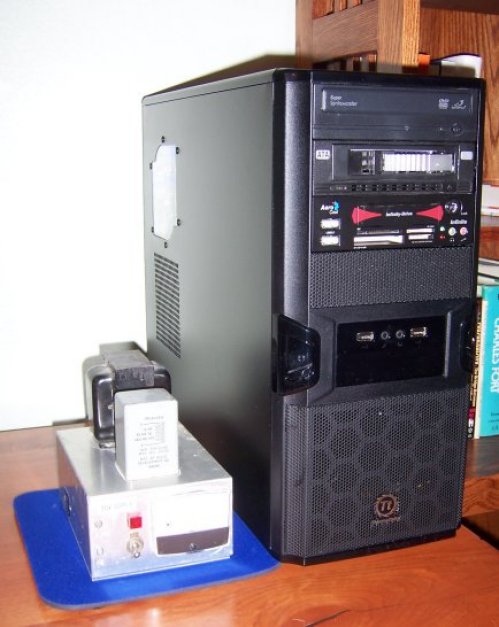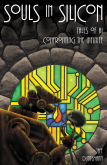
Carol and I traded offices here after completion of our downstairs rehab, and while the process is ongoing (much stuff is still lying around in boxes) I’ve come upon a problem I didn’t have before. Back in late March, I touched the metal bezel of a conventional USB 2.0 port on my desktop quadcore, and drew a 1/4″ spark. As you might expect, the machine died instantly. The new carpet generates a lot more static than the old carpeting did–and our customary 7-9% humidity doesn’t help.
Why the USB port bezel wasn’t grounded is a mystery, since the wire coming out of the top panel encapsulated port assembly was screwed tight to the case, and the case to the third wire. I can only assume that something was broken inside the port assembly. I’ll tell you right now, I am not going to buy any Antec cases anymore. This is the second one that’s gone bad in precisely the same way: wonkiness in the front/top panel port assembly. Furthermore, I had to destroy the top panel to remove the port assembly, since the case metal completely blocked access to two of the plastic release tabs. No wonder they wouldn’t sell me a replacement port assembly, since the assembly could not be changed without destroying the case itself. Antec is off my list, now and forever.
There’s nothing bleeding-edge in the new machine. The mobo is a Gigabyte Z68A-D3H-B3, if that means anything to you, with an Intel Core i5-2400 Sandy Bridge processor on it. The cores run at 3.1 GHz, vs 2.4 GHz for the old machine. I had them put it all in a Thermaltake V3 case, which is smaller and simpler than the Antec Nine Hundred I’ve been using since late 2008. I am not a gamer and am quite content with integrated graphics, so elaborate cooling machinery is unnecessary. The case fans are quiet (though one of them seems to rattle periodically) and overall I consider it a winner.
Now to figure out how not to kill the new machine. The quick fix was to pull a homebrew 350V power supply off the shelf and plug it in beside the new quadcore. The aluminum chassis is grounded to the wall through the 3-wire cord, so touching the chassis before touching the quadcore should do it. (The blue mouse pad is just to keep the supply from scratching the table.) I know it works because I can pull quite a spark by touching it after scuffing around the lower level. Better still, if I hold an NE-2 neon bulb by one lead and wave it a few inches from the grounded power supply, I can see the static bleed off through the bulb, without even touching the other lead to the chassis. (Turning the lights off makes it more dramatic, but I can see the orange flickers in full daylight.)
The neon bulb experiment suggests that something more graceful than an old power supply could be put together as a grounding station. I have a wonderful 5″ bronze worm wheel given to me by Carol’s dad circa 1987, and with a little skill and some copper pipe fittings could build something with a VR-75 tube at the center, and the gear as the touchplate. Touch the plate, flash the tube, kill the static. I’m going to lash it up before putting a lot of work into it, but I see no reason why it wouldn’t work. More as it happens.










